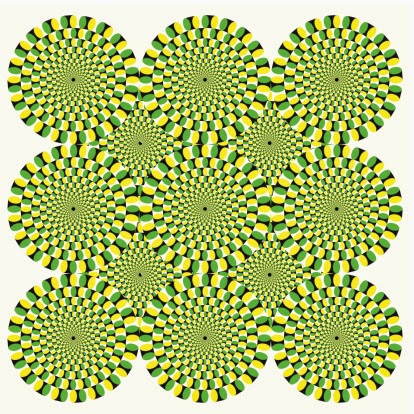| Online: | |
| Visits: | |
| Stories: |

| Story Views | |
| Now: | |
| Last Hour: | |
| Last 24 Hours: | |
| Total: | |
Visual illusions, when experienced and explained, foster open-mindedness
From sworn witness accounts of alien visitations, to deep-rooted trust in quack medical treatments, the human trait that psychologists call “naive realism” has a lot to answer for. This is people’s instinctive feeling that they perceive the world how it is, encapsulated by the saying “seeing is believing.” The truth, of course, is that our every perception is our brain’s best guess, built not merely with the raw material of what’s out in the world, but just as much with the bricks of expectation, hope and imagination.
William Hart and his colleagues at the University of Alabama propose that naive realism not only inspires false confidence in what we see, but also more generally in our beliefs and assumptions. Based on this logic, the researchers tested whether explaining to people about naive realism, and showing them the unconscious, fallible mental work that leads to their unstable perceptions, might have knock-on effects, making them more open-minded and more doubtful of their assumptions about a person’s character.
Nearly 200 students took part and were split into four groups. One group read about naive realism (e.g. “visual illusions provide a glimpse of how our brain twists reality without our intent or awareness”) and then they experienced several well-known, powerful visual illusions (e.g. the Spinning Wheels, shown above, the Checker Shadow, and the Spinning Dancer), with the effects explained to them. The other groups either: just had the explanation but no experience of the illusions; or completed a difficult verbal intelligence test; or read about chimpanzees.
Afterwards, whatever their group, all the participants read four vignettes about four different people. These were written to be deliberately ambiguous about the protagonist’s personality, which could be interpreted, depending on the vignette, as either assertive or hostile; risky or adventurous; agreeable or a push over; introverted or snobbish. There was also a quiz on the concept of naive realism.
The key finding is that after reading about naive realism and experiencing visual illusions, the participants were less certain of their personality judgments and more open to the alternative interpretation, as compared with the participants in the other groups. The participants who only read about naive realism, but didn’t experience the illusions, showed just as much knowledge about naive realism, but their certainty in their understanding of the vignettes wasn’t dented, and they remained as closed to alternative interpretations as the participants in the other comparison conditions.
“In sum,” the researchers said, “exposing naive realism in an experiential way seems necessary to fuel greater doubt and openness.”
At the time of writing, the internet is abuzz with talk of a dress that looks different colours to different people, with numerous scientific explanations on offer. It’s a bit like the main intervention condition in this study writ large – experience of an illusion, combined with explanation that shows the hidden work of unconscious processing. Might this internet meme foster greater openness in society?
Before we get carried away, more is research is needed to test the longevity of these effects, and how far they generalise. It’s possible, for example, that people’s core beliefs would not be affected in the same way. Nonetheless, the researchers are hopeful: “… the present effects may have implications for fostering a more tolerant, open-minded society,” they concluded.
_________________________________ ![]()
Hart, W., Tullett, A., Shreves, W., & Fetterman, Z. (2015). Fueling doubt and openness: Experiencing the unconscious, constructed nature of perception induces uncertainty and openness to change Cognition, 137, 1-8 DOI: 10.1016/j.cognition.2014.12.003
Post written by Christian Jarrett (@psych_writer) for the BPS Research Digest.
The Research Digest is a free blog and email newsletter published by the British Psychological Society and written by Christian Jarrett. Also find us on Twitter and Facebook.
Source: http://digest.bps.org.uk/2015/03/visual-illusions-when-explained-foster.html




